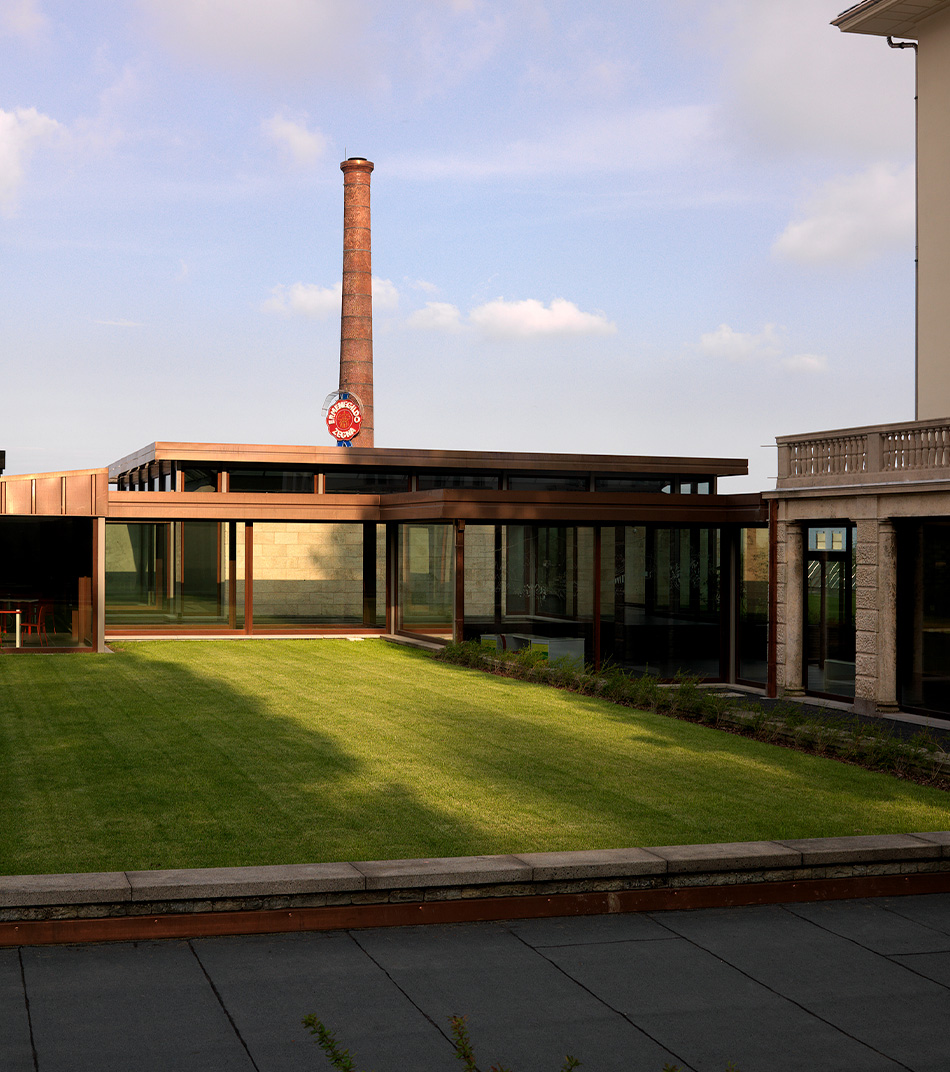The close of a year that has presented us with great challenges brings to mind the silent teachings of my grandfather Ermenegildo, to whose memory Fondazione Zegna is dedicated.
Many times I have wondered what his secret was for choosing with calm determination the right path to pursue, even in the middle of the darkest and hardest years. Ermenegildo would have sought the answers by walking in silence along the paths that from his beloved wool mill lead to the mountains and up to the peaks where, looking beyond the horizon, ideas become clearer.
Retracing his woods I rediscovered the meaning of community, which, like the forest, is made up of many individuals who alone would be weak and exposed, but who together can cope with even the most bitter adversities.
Beginning therefore with Casa Zegna, archive and cultural centre, our first thought in the face of enforced physical distancing was to keep our network of contacts alive, showcasing and sharing our stories, so that everyone, even from a distance, could take part. Reopening the doors of a renovated Casa Zegna to Piedmontese visitors on 2 June, to mark Republic Day, and organising the National Open-Air Days together with FAI on 28 June were two occasions for celebrating, welcoming and returning to a social life with all the necessary safeguards.
The established network of associations that Fondazione Zegna has collaborated with for years was also fundamental in deploying a rapid response to the health and social emergency, providing immediate in-home assistance to dozens and dozens of elderly people who live alone, both locally and in the Milanese area that was so badly hit. Together with the extraordinary Reshape team, we ensured educational and counseling activities continued for children and young people aged 8 to 17 and from 19 to 29 with webinars and digital meetings. The San Patrignano community, with all the necessary precautions, has done its best to continue to operate, keep their established commitments and find new channels to distribute their creations.
Finally, I return to the mountains and to the natural world that feeds us and which, like never before this year, we rediscovered to be essential to our life. The Zegna Forest project allowed us first of all to update the green thinking implemented by Ermenegildo Zegna since the beginning of the last century, discovering how relevant it was in terms of vision, prevention and care. Faithful to that principle of virtuous coexistence between man and nature that has always inspired Oasi Zegna, we undertook a multi-year project, starting with 16 hectares of sick and weakened forest, which in autumn we reforested with native species more suitable and resistant to the conditions of our land and which now “rest” under the snow, waiting to wake back up in the spring.
In offering you my most sincere wishes and thanking you for having been by our side, I would like to leave you with the words with which Lev Tolstoy begins his novel Resurrection, and that resonate as a hope for rebirth.
Anna Zegna
Though men in their hundreds of thousands had tried their hardest to disfigure that little corner of the earth where they had crowded themselves together, paving the ground with stones so that nothing could grow, weeding out every blade of vegetation, filling the air with the fumes of coal and gas, cutting down trees and driving away every beast and every bird — spring, however, was still spring, even in the town. The sun shone warm, the grass, wherever it had not been scraped away, revived and showed green not only on the narrow strips of lawn on the boulevards but between the paving-stones as well, and the birches, the poplars and the wild cherry-trees were unfolding their sticky, fragrant leaves, and the swelling buds were bursting on the lime trees; the jackdaws, the sparrows and the pigeons were cheerfully getting their nests ready for the spring, and the flies, warmed by the sunshine, buzzed gaily along the walls.


